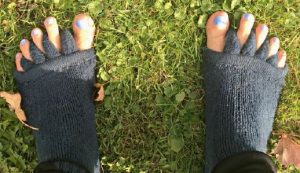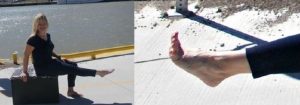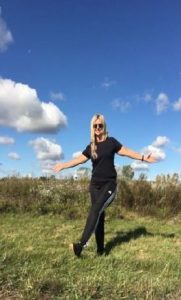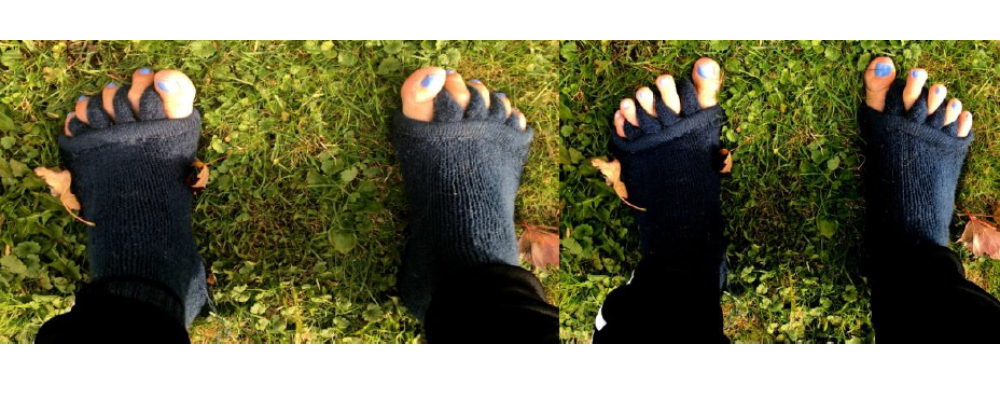Our foot is one of the most complex structures in the body. It is made up of over 100 moving parts which consist of bones, muscles, tendons, and ligaments. Because feet are so complicated with so many moving parts, they can be especially prone to injury over time.
The foot contains 26 bones, 33 joints, and over 100 tendons, muscles, and ligaments. The foot is responsible for balancing the body’s weight on two legs. This requires strong, subtle muscles which can keep the foot standing firm even as we move our body’s weight around at different positions. The foot is divided into three sections. The forefoot contains the five toes (phalanges) and the five longer bones (metatarsals). The midfoot is a pyramid-like collection of bones that form the arch. The hindfoot forms the heel and ankle. The talus bone supports the leg bones (tibia and fibula), forming the ankle. The calcaneus (heel bone) is the largest bone in the foot. Our feet have almost 8,000 nerves so it’s no wonder that feet are ticklish. Having ticklish feet means that nerves are firing correctly. If your feet don’t respond to a soft tickle that could indicate a problem like neuropathy, or damage to the nerves and tissue of the foot.
The muscles of the lower limb and foot are divided into two categories based on their function. The job of local muscles is to support and stabilize the foot while larger muscles in the lower leg produce foot movements. Global muscles are larger and are responsible for moving your ankle and flexing and extending your toes. According to researchers at Harvard Medical School the local stabilizers and global movers are part of a larger system called the foot core system. If your small stabilizing local muscles are weak it may result in an unstable arch that does not absorb impact very well. When local muscles fail to stabilize the foot, global muscles must take over which is not ideal. There are two reasons for this. It’s not their primary job so it’s like substituting a pro for a rookie to do the same job. The job isn’t performed with the same efficiency. The second obstacle is that global muscles have a longer reaction time, which is bad news if we lose our balance. The bottom line is that if the muscles in our feet are week it can lead to overuse injuries, balance issues, plantar fasciitis, and even stress fractures later in life.
Until recently little focus has been placed on the muscles inside the foot. Strengthening the muscles inside the foot helps us to form internal support, potentially reducing occurrence of injury. Training the intrinsic muscles of the foot has also been shown to improve balance. A mobile foot and ankle do a better job absorbing the reaction force of walking. Walking with rigid feet demands more work from the rest of your body. The older foot becomes less springy as the tendons which hold the arch together lose their stretch. This reduces the ability of the foot to absorb impact so that, for example, your feet will be less tolerant of jumping off a rock.
Gait compensations and tight shoes can also contribute to the formation of a bunion at the joint where the big toe joins the sole of the foot. Bunions are painful inflammatory conditions caused by displacement of the big toe. Basically, the big toe is pushed toward the next toe by tight, pointed shoes. That can deform the joint. Have you ever seen a bare foot with the toes pushed together, still in the shape of a pointed toed shoe? The toes are “stuck” in this abnormal position and have lost the normal ability to spread wide. Think of a tripod. The wider the base of support the better it balances. So, if our feet are squashed we minimize that base of support. Stretch the toes gently whenever you can!
Our ancient ancestors were tree-dwellers and needed to be able to hang onto branches tightly with all four limbs. This caused them to evolve extraordinarily intricate hands and feet, which were capable of grasping, rotating, and gripping. That wonderful dexterity is what we lose by sticking our feet in shoes all day long. We can end up with stiff, deformed, painful feet.
Here are some exercises to try at home that will keep your feet fit and healthy. But you should always see a doctor if you suspect you have a foot injury.
Toe Splaying: Try widening your toes as much as possible. In the photos I am wearing toe spacer socks. If you find you have a difficult time splaying your toes, spacer socks or silicone toe spacers may help.

Toe Lifts: It may be more difficult than it seems. Start by lifting your big toe while trying to keep all other toes on the ground. Now try lifting the other 4 toes while keeping the big toe anchored.

Figure 8’s: Make figure-of-eight patterns with the foot, starting the 8 leading with the big toe and then pushing outward with the little toe.
Toe curling: Toe curling is one of the most effective exercises to train your instrinsic feet muscles. Try rolling your foot into a ball. You may get cramping at first so go easy to start. Next pause keeping the foot pointed try pulling your toes back. Roll back into a ball. Hold for a count of 5.

Marble Pick Up: Place some marbles or any small object on the floor (I’m using cotton balls) Try to pick the object up with your foot and place it in the container.
Outer edge – inner edge: While standing shift your weight onto the outer edges of your feet while keeping your entire body upright. Then try standing or walking on the inner edges of your feet.
Heel and Toe Walk: Try walking on your heels for 30 seconds and then your toes for 30 seconds.
Leg Swing: Swing the leg outward to the side and then across midline.

Every part of our body ages but our feet are subjected to particularly harsh treatment. Cold, achy feet are a common complaint as we age due to restricted blood flow or compressed nerves. Good wool socks can help in the short term, but foot exercise is the long-term solution. Foot exercises don’t require a lot of time. What counts is doing them on a regular basis. Try to incorporate feet strengthening exercises into your everyday life. Working your feet should be like brushing your teeth. It just takes a few minutes a day and it can prevent a lot of problems in the long run.






